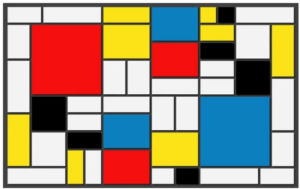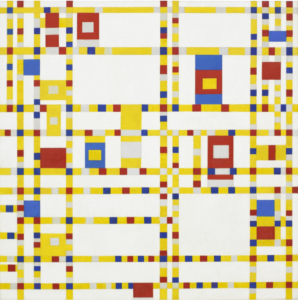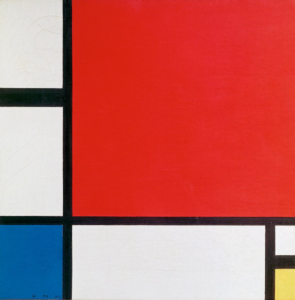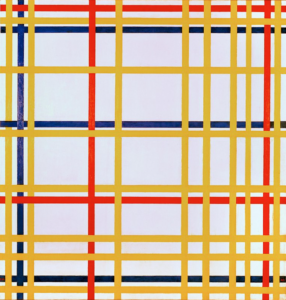Abstract Art Artists: Piet Mondrian
Abstract artworks by Piet Mondrian
Piet Mondrian: Pioneer of Neoplasticism
- Early Life (1872-1944):
– Born on March 7, 1872, in Amersfoort, Netherlands.
– Showed an early interest in art and attended the Royal Academy of Fine Arts in Amsterdam. - Artistic Evolution:
– Initially influenced by Impressionism and Post-Impressionism.
– Transitioned to Cubism after exposure to the works of Picasso and Braque. - Founding Neoplasticism:
– Co-founded the De Stijl movement in 1917, which embraced geometric abstraction and simplicity.
– Developed Neoplasticism, emphasizing primary colors, non-representational forms, and a strict grid structure. - Grid Paintings:
– Best known for his iconic grid paintings, such as “Composition with Red, Blue, and Yellow” (1930).
– Utilized straight lines and primary colors to create a sense of order and harmony. - Theosophy and Spirituality:
– Mondrian’s interest in Theosophy influenced his art, seeking a universal visual language that transcended cultural and individual differences.
– Aimed to express a spiritual harmony through his compositions. - Paris Period:
– Moved to Paris in 1911, where he encountered avant-garde artistic movements and developed his unique style.
– Associated with artists like Theo van Doesburg and exhibited with the Salon des Indépendants. - New York Years:
– Fled to New York during World War II in 1940.
– Continued to create influential works, adapting to the urban environment while maintaining his Neoplastic principles. - Legacy:
– Considered one of the pioneers of abstract art and a key figure in the development of modern art.
– Mondrian’s influence extends to various fields, including design, architecture, and fashion. - Key Works:
– “Tableau I” (1921)
– “Broadway Boogie Woogie” (1942-43)
– “Composition in Red, Blue, and Yellow” (1930) - Death and Recognition:
– Passed away on February 1, 1944, in New York City.
– Mondrian’s impact on the art world continues to be celebrated, with retrospectives and exhibitions honoring his contributions.
Piet Mondrian’s journey from traditional art to the forefront of abstract art and Neoplastic movements marks a significant chapter in the history of modern art. His commitment to geometric abstraction and spiritual expression continues to inspire artists and resonate with audiences worldwide.
Read more about Piet Mondrian on Wikipedia.




